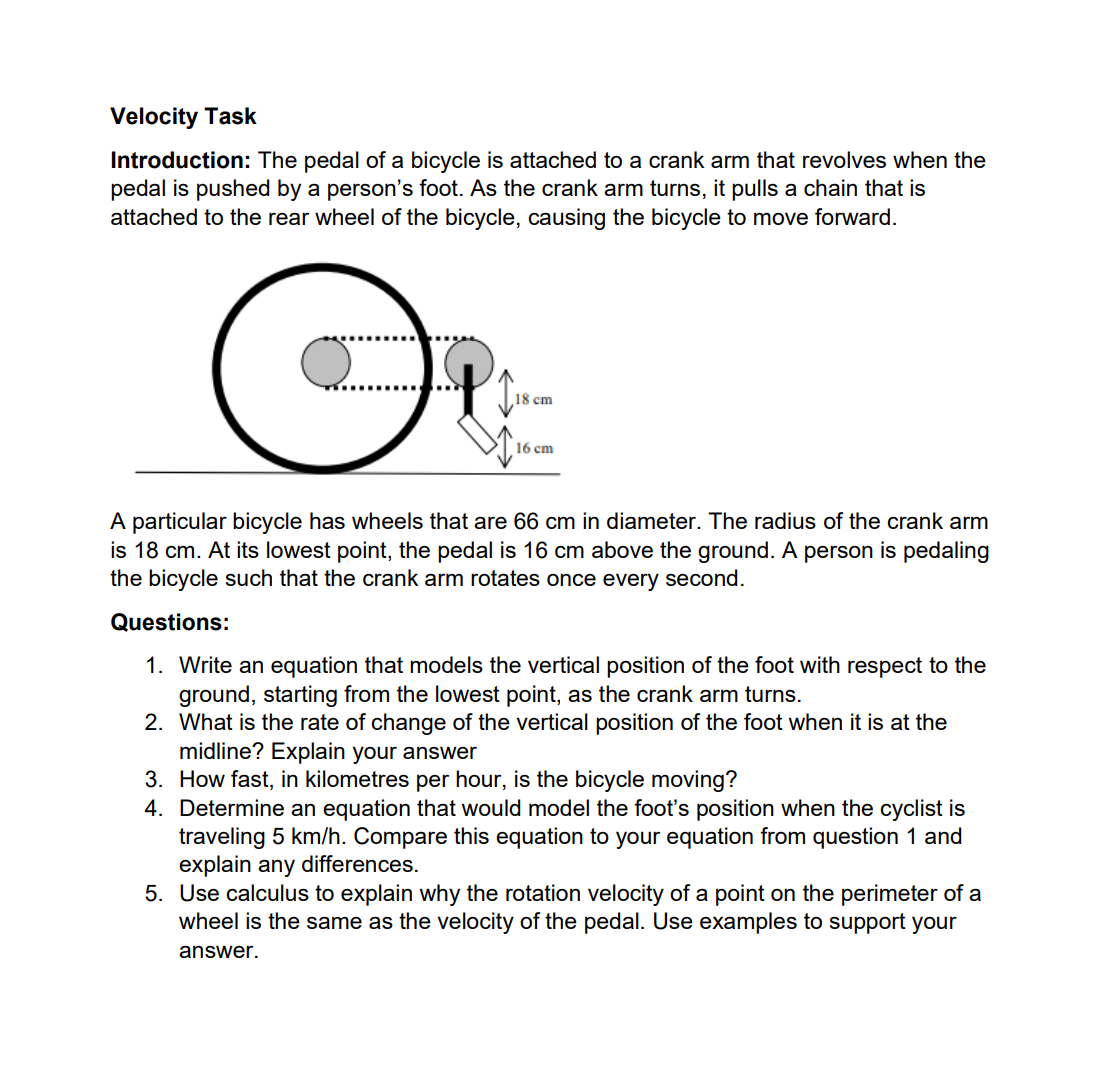A particular bicycle has wheels that are 66 cm in diameter. The radius of the crank arm is 18 cm. At its lowest point, the pedal is 16 cm above the ground. A person is pedaling the bicycle such that the crank arm rotates once every second. Questions: 1. Write an equation that models the vertical position of the foot with respect to the ground, starting from the lowest point, as the crank arm turns. 2. What is the rate of change of the vertical position of the foot when it is at the midline? Explain your answer 3. How fast, in kilometres per hour, is the bicycle moving? 4. Determine an equation that would model the foot’s position when the cyclist is traveling 5 km/h. Compare this equation to your equation from question 1 and explain any differences. 5. Use calculus to explain why the rotation velocity of a point on the perimeter of a wheel is the same as the velocity of the pedal. Use examples to support your answer.
A particular bicycle has wheels that are 66 cm in diameter. The radius of the crank arm
is 18 cm. At its lowest point, the pedal is 16 cm above the ground. A person is pedaling
the bicycle such that the crank arm rotates once every second.
Questions:
1. Write an equation that models the vertical position of the foot with respect to the
ground, starting from the lowest point, as the crank arm turns.
2. What is the rate of change of the vertical position of the foot when it is at the
midline? Explain your answer
3. How fast, in kilometres per hour, is the bicycle moving?
4. Determine an equation that would model the foot’s position when the cyclist is
traveling 5 km/h. Compare this equation to your equation from question 1 and
explain any differences.
5. Use calculus to explain why the rotation velocity of a point on the perimeter of a
wheel is the same as the velocity of the pedal. Use examples to support your
answer.

Step by step
Solved in 3 steps









